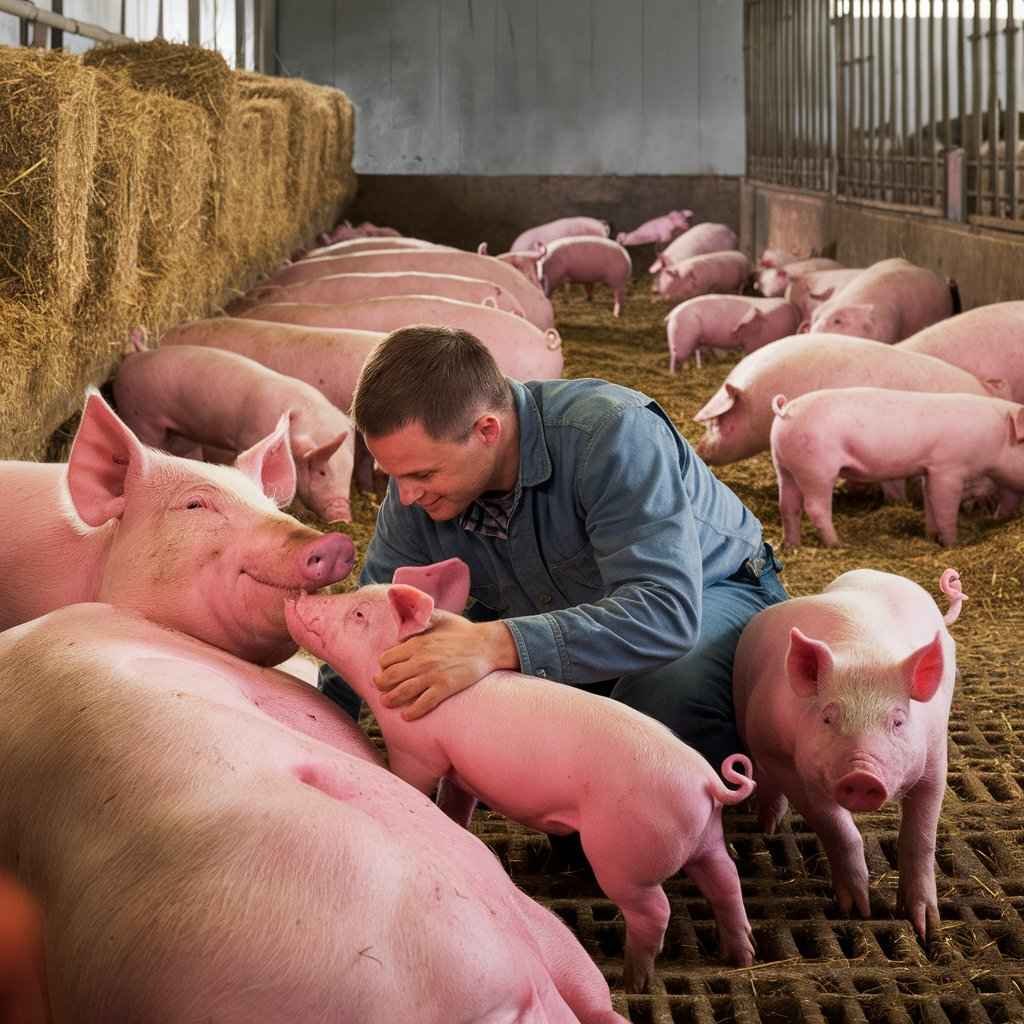The care and management of newborn pigs, usually known as piglets, is crucial to their survival and proper development. Piglets should be kept warm and dry right after birth because they are prone to hypothermia. To avoid infections, ensure that the farrowing environment is clean and well-bedded. Piglets’ immunity depends on receiving colostrum from the sow within the first few hours of life. Regular monitoring, correct diet, and early management for health conditions are required to prevent mortality and promote healthy growth.
Table of Contents
Preparing for the Arrival of Newborn Pigs
A smooth and successful delivery for newborn pigs begins with rigorous planning. Setting up a clean and warm farrowing area is critical. This area must be thoroughly cleansed and sterilized to avoid any illnesses that could endanger the piglets’ health. Newborn pigs are very susceptible to cold stress, thus the environment should be warm. Installing heat lamps or heating pads can help to keep the piglets happy and healthy by maintaining an optimal temperature of 90-95°F (32-35°C).
Equally crucial is the sow’s health and comfort. Prior to farrowing, ensure that the sow is in good health by scheduling regular veterinary check-ups. A nutrient-dense food will benefit her health and, by extension, her piglets’ health. Comfortable bedding should be supplied to alleviate stress and avoid injury. Straw or shavings can be utilized, but make sure they’re dry and clean.
Preparing the necessary supplies ahead of time will make the childbirth process go more smoothly. Heat lamps, clean bedding, and colostrum supplementation are all necessary goods in case the sow produces inadequate milk. Colostrum is essential for the development of the piglets’ immune systems, and having a replacement on hand can save their lives.
Monitoring the sow for indications of labor is critical. Common indicators include restlessness, nesting behavior, and milk production. Familiarize yourself with these signals so you may better predict the delivery process. It’s also critical to be prepared to act if issues occur. Difficulties like prolonged childbirth or a trapped piglet demand prompt assistance. Knowing when to contact a veterinarian can have a huge impact on the survival and health of both the sow and her piglets.
Care and Management

1. Temperature and Environment
- Warmth: Newborn pigs are extremely sensitive to hypothermia. It is critical to give a warm atmosphere with a temperature of 90-95°F (32-35°C) during the first few days of life.
- Bedding: Ensure that the farrowing area is clean, dry, and well-bedded with materials such as straw or shavings for comfort and warmth.
2. Colostrum Intake
- First feeding: Piglets should get colostrum from the sow within a few hours of birth. Colostrum is high in antibodies and critical nutrients that boost immunity and offer energy.
- Assistance: If piglets have trouble nursing, assistance may be required to ensure they receive enough colostrum.
3. Nutrition
- Nursing: Piglets should nurse often from the sow to maintain adequate nutrition and water.
- Supplemental feeding: If the sow’s milk is insufficient, supplementary feeding with commercial milk replacers may be required.
4. Health Monitoring
- Regular checks: Piglets should be monitored on a frequent basis for signs of disease, injury, or malnutrition.
- Preventive Measures: To avoid anemia, administer iron supplements via injection within the first few days of life.
5. Hygiene and Sanitation
- Cleanliness: Maintain a clean farrowing area to avoid infection. Frequently remove filthy bedding and disinfect the area.
- Navy Care: To avoid infection, treat the piglets’ navels with iodine.
6. Socialization and Behavior
- Interaction: Allow piglets to socialize with the sow and their littermates to foster natural social habits.
- Observation: Keep an eye on the piglets to ensure they are nursing properly and are not squashed by the sow.
7. Weaning
- Gradual Process: Weaning should be gradual, beginning at 3-4 weeks of age. Solid feed should be introduced gradually to help piglets transition from milk to grain-based diets.
- Stress Reduction: Reduce stress during weaning by creating a stable environment and delivering adequate nutrients.
8. Veterinary Care
- Health Checks: Regular veterinary check-ups are required to monitor the health of both the sow and the piglets.
- Vaccinations: To protect piglets from common infections, follow the vaccination regimen indicated by your veterinarian.
Effective care and management of newborn pigs is critical to their survival and development. Key procedures include keeping piglets warm, clean, and dry to prevent hypothermia and infections, giving them colostrum right after birth to enhance immunity, and periodically assessing their health. Proper nutrition is essential, which includes frequent nursing and supplemental feeding as needed. Hygiene practices, such as iodizing navels and keeping the farrowing area clean, are vital. Gradual weaning and stress reduction are critical for a seamless transition. Regular veterinarian care and immunizations assist protect piglets’ health and ensure they thrive in their early stages of life.
Frequently Asked Question(FAQ)
Why is it important to keep newborn piglets warm?
Because of their inability to regulate body temperature, newborn piglets are extremely vulnerable to hypothermia. Keeping them warm reduces stress, disease, and death.
What are common signs of illness in newborn piglets?
Common symptoms of sickness include fatigue, decreased nursing, diarrhea, respiratory trouble, and aberrant behavior. Regular monitoring is required for early identification and treatment.
Related Articles

